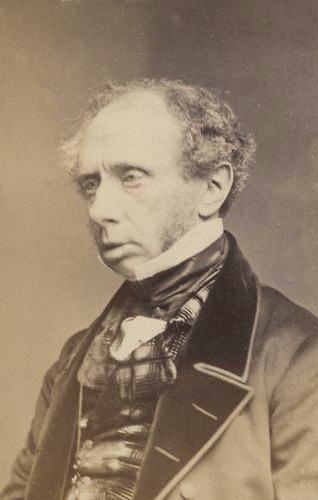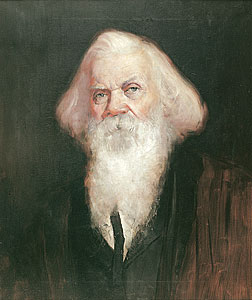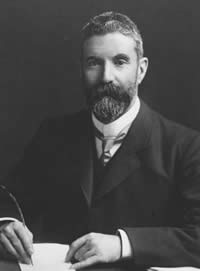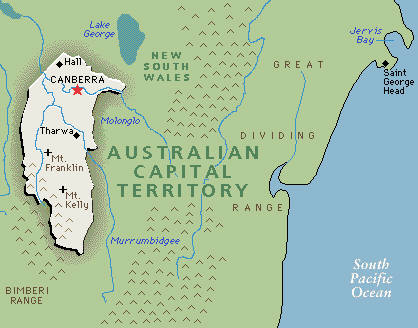
- •Economic controversy
- •Egon Kisch
- •Identity forged (выковыванная) by War
- •The effects of the First World War on Australia's German-speakers
- •General John Monash
- •"I might remark that we are at war with the German nation; we are not at war with German literature."
- •In 1916 the Upwey Progress Association (Melbourne) asked for a street lamp to be removed because it had the words "Made in Germany" on it.
- •In 1917 Prime Minister Billy Hughes took away from German Australians the right to vote, however, the second Conscription Referendum held in December 1917 was also defeated.
- •Prime Minister Billy Hughes
- •Between the wars
- •The Great Depression
- •World War II
- •The postwar years
- •The “Stolen Generation”
- •Apology text (excerpt)
Economic controversy
In 1866 Victoria, followed by South Australia and Tasmania, adopted a policy of high tariffs on imported goods in order to protect its own industries and markets. New South Wales continued to stay with a free-trade policy.
Throughout the 1870s and 1880s, the arguments over free trade versus protection divided the press, the political parties, and the colonies. This, together with the continuing jealousies among them, hindered (тормозило) any significant attempts at cooperation and possible union among the six colonies until the 1890s.
The rapid increase of Australia’s population from 1830 to 1860 contributed to the growth of the six capital cities. With the decline (падение) of gold mining in Victoria and New South Wales in the 1860s, even the prospectors (золотоискатели) drifted to the cities. By the end of the century, Sydney and Melbourne were among the world’s largest cities.
Each capital served as the major port for its colony. Perceiving (воспринимая) others as rivals (соперники), each city and colony tried to emphasize their own identity. Contacts between individual colonies were secondary to their ties with Britain, and rivalries (соперничество) among them were common; thus, Victoria and New South Wales each used a different gauge (ширина колеи) for their railroads.
As the number of free settlers in Australia grew, so did the colonists' demands for self-government. By 1856, Britain had granted self-government to all the colonies except Western Australia. Each had its own elected legislature (законодательное собрание) and government ministers, who controlled the colony's internal affairs. Britain continued to manage the foreign affairs and defense of the colonies. Meanwhile, squatters had settled the part of New South Wales north and west of Brisbane. In 1859, Britain created the colony of Queensland out of this area, with Brisbane as its capital.
Movement toward federation
Federation of the Australian colonies came late. The idea of unification appeared as early as 1847 in proposals by Earl Grey, Britain’s colonial secretary.

Henry Grey, 3rd Earl Grey
In the 1850s John Dunmore Lang, a Scottish Presbyterian cleric in New South Wales, formed the Australian League to campaign for a united Australia. Conferences among colonial governments in the 1860s also considered closer cooperation and unification. With the formation of the Dominion of Canada in 1867, British officials began to expect a similar effort among Australians.

John Dunmore Lang
For decades many politicians and businessmen had been trying to convince the governments and the people of the six Australian colonies that federation would be a good thing. They believed that Australia needed a single national government to make decisions for all Australians. The colonies would become states within the Australian nation.
The two most important people in the federation movement were Henry Parkes and Alfred Deakin. Parkes came to Australia in the late 1830s. For many years he ran his own newspaper, The Empire, in Sydney. He was always a poor businessman and
frequently ran out of money. But Parkes was a great politician. In 1899 in the little
town of Tenterfield, New South Wales, he declared that the colonies should federate. By then he was an old man. Everyone knew him by his long beard and mane (грива) of white hair. He did not live to see the colonies federate. But for his early efforts Parkes became known as the 'father of federation'.

Henry Parkes
Alfred Deakin came from Victoria. He was a highly intelligent man and a great speaker. He became the second Prime Minister of Australia (Edmund Barton was the first).

Alfred Deakin
One reason why Australians were keen to have a national government was their fear of invasion by Germany or some other rival of Britain's. Australians began to feel that they could not go on relying on Britain to defend them. A single government was needed to plan the best way to defend the country's coastline. Above all, they believed that Australia needed its own navy.
The people who wanted federation also said that the taxes put on goods passing between the colonies should be stopped. These taxes - tariffs - meant that everybody had to pay more for goods coming from other colonies. Federate the colonies, it was said, and food and many other items would be cheaper. Australians were also growing to believe that they had a lot in common whichever colony they came from. They liked the idea of Australia being one country with one government.
In 1899 the people of Australia voted in favour of federation. Elections were held for the parliament of the Commonwealth of Australia. The Duke of York sailed out from England to declare on 1 January 1901 that the new nation had come into being. He opened parliament in Melbourne on 9 May 1901. Everywhere the new flag was flown. But the national anthem was the same as Britain's. Australia was going to keep its loyal ties to Britain.
In 1911 the Australian Capital Territory was established for a new capital, Canberra.

The Australian Capital Territory
White Australia Policy
One of the first objectives of the new federal government, established in 1901, was the design of the White Australia Policy. The White Australia policy refers to an extensive period of both official and unofficial discrimination in Australian history, during which immigration policy and citizenship requirements were heavily biased to favour white European migrants, and more specifically Anglo-Saxon migrants over other races. Although in the present day Australia generally prides itself on being one of the most multicultural of the "western-style" democracies, its past contains a period of government-endorsed racism that is perhaps exceeded only by the apartheid regime of South Africa.
The policy can be traced back to the 1850s when violence against Chinese miners led to the colonial administration introducing restrictions on Chinese immigration. Towards the end of the 19th century the kanakas (the South-east Asians recruited to work in the sugar cane fields) were the main target of discrimination on economic grounds. Squatters, plantation owners and shipowners had occasionally introduced Asian workers because they were cheaper to employ. Australians feared that if this was allowed to happen on a large scale they would have to accept the same low wages or go without jobs altogether.
A lot of Australians believed that so long as there was more than one race in Australia there would be trouble. People of different races never could get on together, they said. The Aboriginal people no longer much concerned white Australians because they
were convinced that they would soon die out. To allow any new race in would be madness, they said.
Alfred Deakin, a Victorian politician who was soon to become Prime Minister, said the main reason for the colonies agreeing to become one nation was to make the White Australia Policy an Australian law. All Australians, Deakin said, wanted to be 'one people and remain one people without the admixture of other races'.
The White Australia Policy was to be like a fence around Australia's shores.
In 1901, the new Federal Government, as its first act, passed the Immigration Restriction Act to "place certain restrictions on immigration and... for the removal... of prohibited immigrants". The Immigration Restriction Act effectively ended all non-European immigration by providing for entrance examinations in European languages.
The Immigration Restriction Act of 1901 stated that immigration was prohibited for any 'person who when asked to do so by an officer fails to write out at dictation ... a passage of fifty words in a European language directed by the officer'. Not many Asians, it was soon discovered, had a good working knowledge of Bulgarian or the Transylvanian dialect of Romanian.
The Immigration Restriction Act effectively stopped all non-European immigration into the country and that contributed to the development of a racially insulated (изолированное) white society.
One of the most celebrated victims of the dictation test was Egon Kisch, a Czechoslovakian communist writer who arrived in Australia in 1934 to address an anti-war congress.

